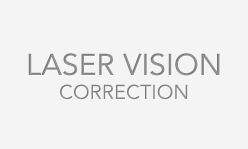Glaucoma

Glaucoma refers to a group of eye diseases that have in common characteristic optic nerve damage (cupping) with associated visual field loss. Glaucoma is a leading cause of blindness and visual impairment in the United States. This disease can affect anyone from newborns to the elderly. It is estimated that up to 3 million Americans have glaucoma. The prevalence in African- Americans is 3 to 4 times greater than in the general population. Most people with glaucoma do not experience any symptoms and may be unaware they have the disease until they have lost a significant amount of vision. Early detection and treatment are the best way to protect eyes from serious loss of vision or blindness.
Types of Glaucoma
Open-Angle Glaucoma
 Open-angle glaucoma occurs when the fluid in the eye drains too slowly through the trabecular meshwork, a network of tiny drainage channels, resulting in a build up of fluid in the eye and an elevation in the internal eye pressure. If left untreated, this elevated eye pressure can cause damage to the optic nerve with loss of visual field and even total blindness.
Open-angle glaucoma occurs when the fluid in the eye drains too slowly through the trabecular meshwork, a network of tiny drainage channels, resulting in a build up of fluid in the eye and an elevation in the internal eye pressure. If left untreated, this elevated eye pressure can cause damage to the optic nerve with loss of visual field and even total blindness.
Narrow-Angle Glaucoma
 Narrow-angle glaucoma is caused by blockage of the trabecular meshwork by the iris. In an attack of acute narrow-angle glaucoma, this blockage can cause a sudden rise in pressure in the eye resulting in severe eye pain and, in some cases, loss of vision.
Narrow-angle glaucoma is caused by blockage of the trabecular meshwork by the iris. In an attack of acute narrow-angle glaucoma, this blockage can cause a sudden rise in pressure in the eye resulting in severe eye pain and, in some cases, loss of vision.
Risk Factors for Glaucoma
Everyone is at risk for developing glaucoma. Those at greater risk meet the following criteria:
- Age
- Family history of glaucoma
- Elevated eye pressure
- African-American or Hispanic descent
- Not having regularly scheduled eye examinations
- Near-sighted or far-sighted
- Thin corneas
- Conditions that affect that blood vessel flow (diabetes, migraines, and low blood pressure)
- Previous eye surgery
- Use of corticosteroids / steroid products
Diagnosis of Glaucoma
To detect glaucoma, the physician will perform the following tests:
- Visual acuity
- Visual field
- Tonometry
- Dilated eye examination
- Retinal evaluation
- Pachymetry
- Gonioscopy
- Scanning Laser
Treatment of Glaucoma
Once glaucoma has been diagnosed, treatment should begin as soon as possible by lowering eye pressure to the appropriate level for the patient. Generally speaking, the more severe the glaucoma, the lower the eye pressure needs to be maintained.
Medication
Eye drops or oral medication may be used to lower the eye pressure either decreasing the amount of fluid productions in the eye or by increasing the flow of fluid through the drainage system of the eye. It is important to remember that these eye drops need to be taken regularly for effective control of eye pressure.
Glaucoma Surgery
Selective Laser Trabeculoplasty (SLT)
is the newest laser surgery for open angle glaucoma. Low energy laser is applied to the outflow channels causing the pigmented cells blocking the trabecular meshwork to burst thereby allowing fluid to leave the eye more easily resulting in a lowering of the intraocular pressure. SLT is a repeatable treatment since scarring does not occur during surgery.
Laser Iridotomy
is the treatment for narrow-angle glaucoma. A small hole called an iridotomy is created in the peripheral iris to relieve the pressure behind the iris which is pushing the iris forward into the trabecular meshwork obstructing the outflow drainage of the intraocular fluid from the eye.
Trabeculectomy
is a commonly performed incisionial surgery for the treatment of glaucoma. Briefly, a small hole is surgically created in the eye wall. This opening is under a flap of tissue which is covered by conjunctiva. This procedure allows fluid in the eye to slowly exit through the small opening resulting in a lowering of the intraocular pressure. Antimetabolites such as mitomycin and 5- Fluorouracil are often used intraoperatively to promote more intraocular fluid release through the trabeculectomy site.
Express Glaucoma Filtration Device®
 The Express Glaucoma Filtration Device® is a miniature cannula manufactured from implantable stainless steel used to regulate intraocular pressure in eyes suffering from Glaucoma. The device diverts aqueous humor through the implant from the anterior chamber to an intrascleral space– the bleb. The intraocular pressure is controlled by the hydrodynamic structure of the device which regulates the extent of the drainage. This procedure is an improvement over Trabeculectomy due to metered flow of aqueous fluid from the eye resulting in less over filtration which can cause excessively low intraocular pressure.
The Express Glaucoma Filtration Device® is a miniature cannula manufactured from implantable stainless steel used to regulate intraocular pressure in eyes suffering from Glaucoma. The device diverts aqueous humor through the implant from the anterior chamber to an intrascleral space– the bleb. The intraocular pressure is controlled by the hydrodynamic structure of the device which regulates the extent of the drainage. This procedure is an improvement over Trabeculectomy due to metered flow of aqueous fluid from the eye resulting in less over filtration which can cause excessively low intraocular pressure.
Glaucoma Shunt Procedures
are surgical treatment options in eyes that have failed trabeculectomy or cases where trabeculectomy would most likely not succeed. A glaucoma device such as the Ahmed™ Glaucoma Valve which has a small tube attached to a reservoir is secured to the eye wall. The tube is inserted into the eye through a small hole. The entire device is covered by the conjunctiva. Donor sclerea or pericardium is used to cover the tube. Intraocular fluid in the eye passes though the tube into the reservoir thereby causing lowering of the intraocular pressure. Many glaucoma shunts have an internal valve to regulate the amount of fluid leaving the eye thus allowing better intraocular pressure control.
Ciliary Body Destructive Procedures
are surgical procedures which cause a reduction of intraocular pressure by destroying some of the gland which produces intraocular fluid within the eye. These procedures are usually used late in glaucoma management after other treatment modalities have proved unsuccessful.









